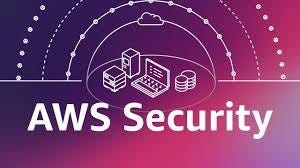
AWS SECURITY
Meta Description:
Explore the complete guide to AWS Security including architecture, IAM, encryption, compliance, threat detection, DevSecOps, and best practices for cloud security in 2025.
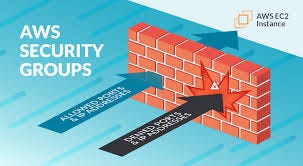
Amazon Web Services (AWS) security is a critical concern for organizations leveraging the cloud to store, process, and transmit data, and it encompasses a broad array of tools, policies, procedures, and controls designed to protect virtual infrastructure, workloads, and sensitive information from unauthorized access, breaches, and vulnerabilities across a shared responsibility model. AWS operates under a foundational security architecture where the cloud provider is responsible for securing the infrastructure that runs all the services offered in the AWS Cloud, while customers are responsible for securing anything they deploy or build in the cloud, a model known as “security of the cloud” versus “security in the cloud.” AWS ensures physical and environmental security across its data centers using controlled access, fire suppression systems, constant surveillance, and redundancy, with certifications including ISO 27001, SOC 1/2/3, PCI-DSS, and HIPAA to prove compliance with global standards, while customers are tasked with securing workloads, identities, permissions, and data. One of the most fundamental AWS security services is AWS Identity and Access Management (IAM), which allows fine-grained control over user permissions, roles, and policies, and when integrated with AWS Organizations and AWS Control Tower, provides multi-account governance, account isolation, and centralized management; IAM policies should always follow the principle of least privilege, and root account usage should be minimized and protected with multi-factor authentication (MFA). Access can be federated using SAML or integrated with Active Directory using AWS Directory Service or AWS IAM Identity Center (formerly AWS SSO), and logging access events through AWS CloudTrail and AWS Config ensures visibility, traceability, and auditability of user actions and configuration changes. Encryption is another core element of AWS security, with support for symmetric and asymmetric key encryption via AWS Key Management Service (KMS), customer-managed keys (CMKs), and hardware security modules (HSMs) using AWS CloudHSM, along with seamless integration with S3, EBS, RDS, and more for at-rest encryption, while in-transit encryption is enabled through TLS and HTTPS; for sensitive workloads, confidential computing and Nitro Enclaves provide isolated execution environments. AWS also supports tokenization, secret management with AWS Secrets Manager and AWS Systems Manager Parameter Store, and data classification using Amazon Macie, an ML-powered service that automatically discovers and protects sensitive information such as PII and PHI. From a network security perspective, Virtual Private Cloud (VPC) constructs allow users to define logically isolated networks with subnets, route tables, NAT gateways, VPNs, and Direct Connect, as well as network access control through security groups and Network ACLs; AWS Network Firewall, AWS Shield (Standard and Advanced), AWS WAF (Web Application Firewall), and AWS Firewall Manager help mitigate DDoS attacks, protect applications, and enforce centralized policies. Application-layer security is further supported through secure coding practices, AWS CodePipeline integration with security tools, and runtime protection with AWS Inspector, which automatically assesses EC2 instances and containers for known vulnerabilities and exposures (CVEs). AWS GuardDuty provides continuous threat detection by analyzing VPC flow logs, DNS logs, and CloudTrail logs using anomaly detection and threat intelligence, while Amazon Detective helps investigate potential security issues through automated correlation and visualization. Security Hub aggregates findings from services like GuardDuty, Inspector, Macie, and third-party tools into a single pane of glass, supporting continuous compliance through customizable security standards like CIS AWS Foundations Benchmark and PCI DSS. For organizations practicing DevSecOps, integrating security into CI/CD pipelines with tools such as AWS CodeBuild, AWS CodePipeline, and third-party solutions enables security-as-code, shift-left security testing, and policy enforcement using AWS Config rules or Open Policy Agent (OPA); infrastructure can be secured at deployment using AWS CloudFormation with Drift Detection, Change Sets, and stack policies to prevent unauthorized modifications.
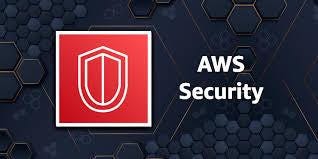
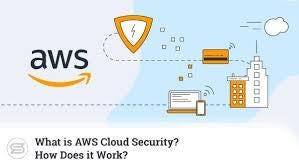
Endpoint and container security are addressed through Amazon Inspector, Amazon EKS security best practices, AWS Fargate task role isolation, and image scanning with Amazon ECR, while serverless workloads in AWS Lambda require securing function permissions, API Gateway authentication, and using AWS WAF, throttling, and VPC integration. Comprehensive logging and monitoring are achieved with Amazon CloudWatch, CloudTrail, VPC Flow Logs, and AWS Config, providing real-time metrics, logs, events, and configuration histories that can be analyzed for trends, anomalies, or indicators of compromise. Organizations operating in regulated industries must ensure compliance with data residency, audit trails, and legal standards, which AWS supports through Artifact for downloading compliance reports, Well-Architected Tool for reviewing architectures, and AWS Organizations SCPs (Service Control Policies) to enforce service-level constraints. Penetration testing is allowed by AWS under specific guidelines, and customers are encouraged to simulate attacks using tools like AWS Fault Injection Simulator, while business continuity is maintained through AWS Backup, cross-region replication, and multi-AZ failover. When using third-party tools or hybrid architectures, security must extend to on-premise and SaaS integrations via AWS PrivateLink, Transit Gateway, or hybrid identity providers. As of 2025, AWS continues to innovate in quantum-resistant encryption, Zero Trust Architecture (ZTA) models, confidential compute, and autonomous threat detection using generative AI and ML algorithms that reduce time to detect and respond. Additionally, adopting frameworks like NIST CSF, ISO 27001, or CSA CCM mapped to AWS services through AWS Well-Architected Framework ensures alignment between business, compliance, and security objectives. Continuous employee training through AWS Security Labs and the AWS Certified Security — Specialty exam builds internal capability, while external engagements such as bug bounty programs via AWS’s partnership with HackerOne help detect and remediate vulnerabilities.
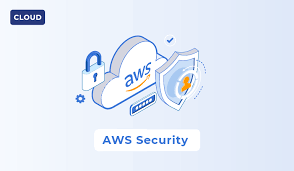
Finally, organizations must enforce a cloud security governance model that combines automation, policy, identity federation, workload protection, and monitoring into a coherent and continuously evolving security posture, aligning security objectives with operational agility and customer trust at scale in the cloud. In conclusion, AWS Security is a multilayered, dynamic, and responsibility-shared framework that demands vigilance, automation, governance, and continuous improvement across every dimension of cloud adoption to ensure a secure and resilient digital infrastructure.

Comments on “Comprehensive Guide to AWS Security: Best Practices, Services, and Strategies (2025)”